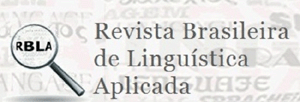Editor's note
Before presenting the papers in this issue, I would like to give some news to our readers and collaborators. First of all, I have some good news. Our journal is now classified by CAPES as QUALIS A1 and that means that it is considered one of the top journals in our field. We are aware that many factors have contributed to that: the group of reviewers, our past and present secretaries, the group of editors, Faculdade de Letras strategic and financial support, ALABs prestige, and the research agencies,FAPEMIG and CNPq, for their financial support.
Second, I must inform that Heliana Ribeiro de Mello is leaving our editorial board after twelve years of hard work. Yes! Twelve years! Her work started in 2000, one year before we launched the first number. She was responsible for several of the issues published so far and her last and very relevant work was the editing of our first international issue. We must thank her for her work and collaboration for such a long time. We also welcome Carla Viana Coscarelli Carla who has just joined the editors team.
In this issue, there are nine articles and a book review. Seven of the nine works discuss different aspects of language and education: continuing education, teaching methods, language learning experiences, identity construction, Information and CommunicationTechnology in the classroom, the concept of genre in language teaching and cohesion in text production by undergraduate language students. The eighth text investigateslanguage impairment and communication and the last onetalks about theoretical support for lexicographic definitions. In the following paragraphs, I present brief details about the articles and the book review in this issue.
Eitelven and Fronza present reflections on the role of continuing education by discussing the experiences of a group of teachers teaching young kids in their literacy process.Luna offersa historiographic research on the teaching of Portuguese in the United States during 1940 through 1960, focusing on the relationshipbetween the Army Method and the development of Applied Linguistics to the teaching of foreign languages in the United States.
Miccoli and Lima discussexperience asacomplex adaptive system. They reviewresearch onexperienceand analyze excerpts from students and teachers report data ofeventsexperienced in theforeign language classroomsin order to offer the reader an understanding of the processesof FL teaching and learningin the light of complexity theory concepts.Oliveira also talks about experiences, but his focus is the construction of identities of a Portuguese woman living in Brazil and graduating in Languages.
Melo, supported by Socio-discursive Interaction, theories about work as developed in Clinical Activity and Ergonomics and the characteristics of work proposed by Machado (2010),presents representations about the kind of work that university teachers hope to achieve when using Internet Technology Communication in the classroom. Borgesmakes a critical comparison between two text genres conceptions theapproach by the Research Group from Genèveand the onebythe socio-rhetorical group as an attempt to understand why one of them was chosen for an official resolution and as guideline to teaching praxis.Paula investigates how the concept of textual cohesion is manifested in the written production of undergraduate Language students. The study is supported by Bakhtiniansand Authier-Revuzs concepts.
Freitas discusses enunciation and authorship through alternative communication and dialogue mediation for peoplewith severe speech and language impairments. Her arguments are supported by the Bakhtinsenunciative-discursive principles and the cultural historicaltheory ofhuman development. Fariasanalyzes the application of truth-conditional semantics to the writing of lexicographic definitions, in order toevaluate the contributions of this theoretical model to the elucidation of the meaning of lexical units and to determine its limitations in relation to the writing of explanatory paraphrases.
Finally, Coscarelli makes a very positive review of thebook Hipertexto no cotidiano escolar: uma realidadepossível, by Luiz Fernando Gomes,whichdiscusses the use of hypertext in the classroom.
Vera Lúcia Menezes de Oliveira e Paiva
Publication Dates
-
Publication in this collection
16 Apr 2012 -
Date of issue
2012

